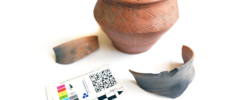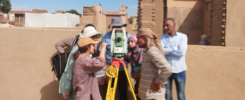The emergency conservation of mobile and immobile cultural heritage was tested in a fictive disaster scenario involving staff of the German Archaeological Institute (DAI), the Leibniz Center for Archaeology (LEIZA) and the German Federal Agency for Technical Relief (THW). The large-scale field test took place in Dresden on 18 and 19 October 2023 and was undertaken as part of the KulturGutRetter project.
A total of 57 participants from the DAI, LEIZA and THW, assisted by Dresden’s emergency response organisation, evaluated workflows and standards of KulturGutRetter’s planned Cultural Heritage Response Unit (CHRU) at two locations on 18 and 19 October. The unit is intended to be deployed around the world when cultural heritage is endangered by disasters and international assistance is needed. During the field test, a grave threat to a protected historical building and the cultural artefacts inside was simulated in a fictive scenario, and the salvage, damage assessment, documentation and emergency treatment and safeguarding of the immobile and mobile cultural heritage were all tested.
Damage assessment and documentation on built heritage
A team consisting of staff from the Architecture Division at the DAI and volunteers from the THW carried out damage assessment and documentation on the heritage building by means of Structure for Motion (SfM), surveillance by unmanned aerial vehicle (UAV), and 3D laser scanning. With the aid of the QField app, data was systematically recorded on damage to the building and its contents. Using these technologies would also allow reliable damage assessment to be done remotely in a real disaster scenario in potentially largely destroyed areas. The necessary infrastructure for the field test – for instance, accessibility of routes and power supply – was provided by the THW volunteers. The city of Dresden kindly made a protected structure available for the test, the former building of the Theater der Jungen Generation.
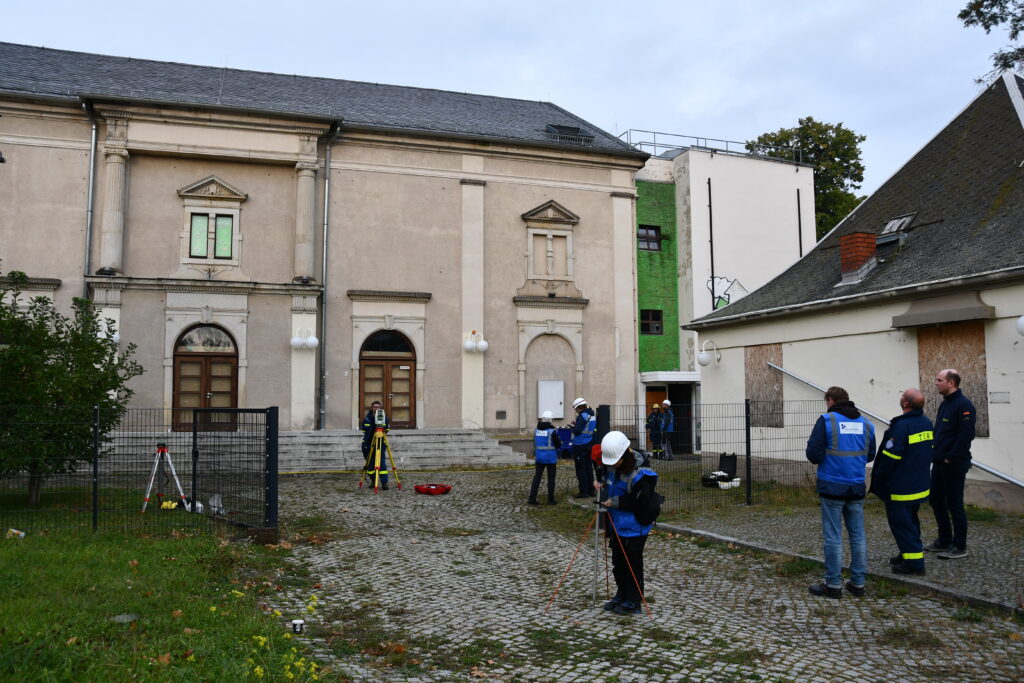
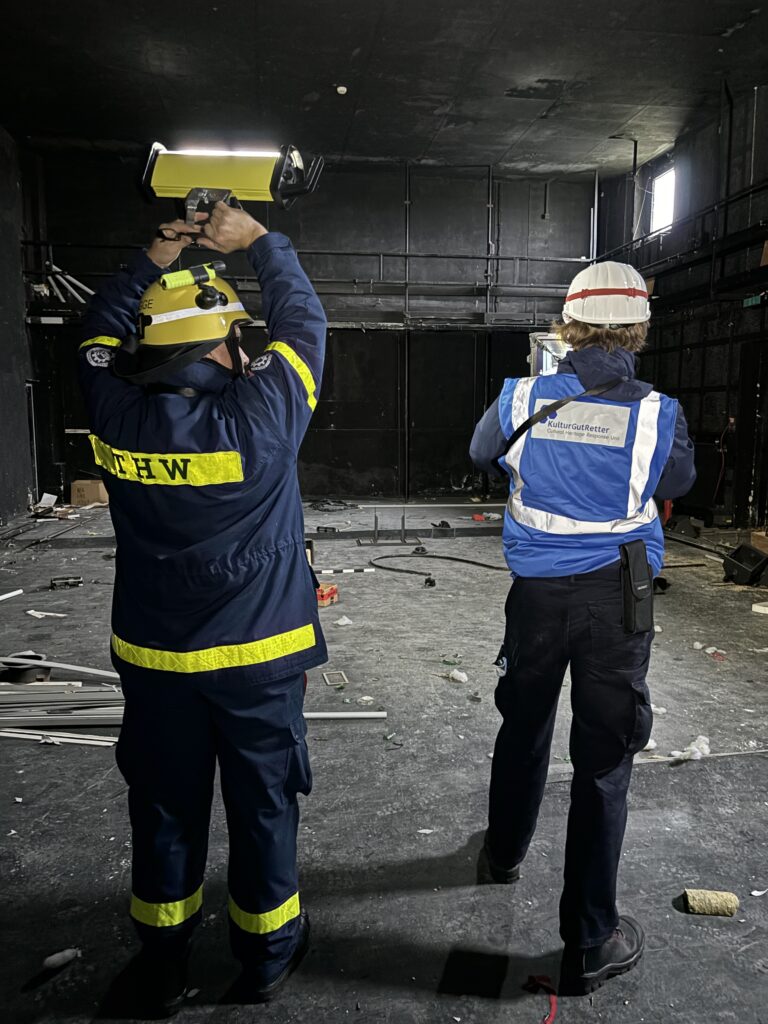
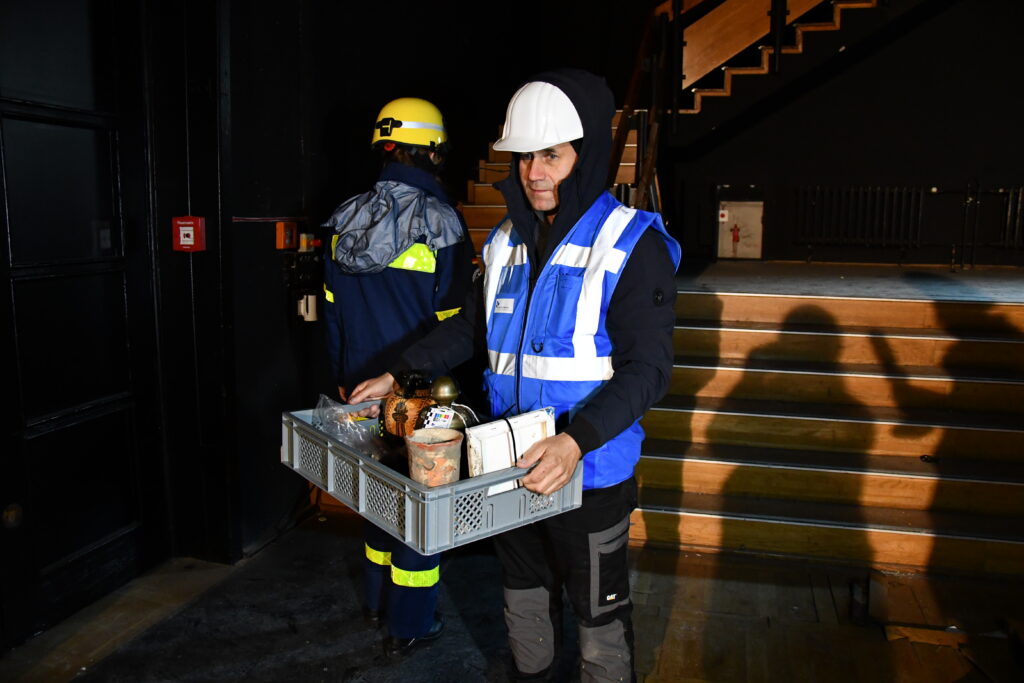
Testing the documentation, damage assessment and salvage of cultural property in and on a protected historical building | photos: DAI, E. Götting-Martin, Helena Brinckmann.
Rapid digital data acquisition in a disaster
For the collection of information, images and descriptions relating to immovable and movable cultural heritage the DAI’s IT department has developed, as part of the KulturGutRetter project, a system in which data can be entered by mobile devices and accessed at any time. Using ID cards which are created for the objects, the status of documented and stabilized objects can be ascertained by QR code throughout the salvage, documentation and emergency conservation operation. This means that even in chaotic emergency situations no valuable information is lost. The practical test in the field was an opportunity for KulturGutRetter to try out data input and synchronising and test the stability of the application.
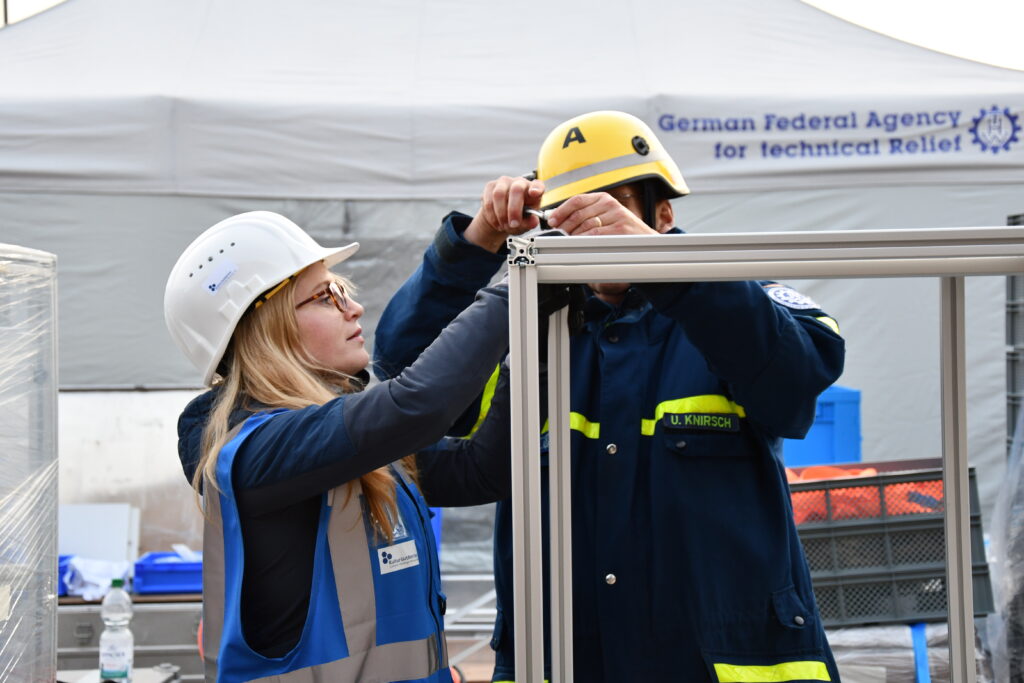
Rescue tents and modular work stations are set up by field personnel | photos: DAI, E. Götting-Martin.
The mobile rescue lab for cultural heritage – workflows and standards are tested
For the emergency treatment of the salvaged movable cultural heritage, seven rescue tents were erected by specialists in conservation/restoration, archaeology and disaster relief on the premises of the Dresden chapter of the THW. Inside the tents they assembled a mobile modular rescue lab which has been developed by experts at LEIZA in the framework of the KulturGutRetter project. While the participants were setting everything up, they evaluated the instructions for assembling the modular work stations in order to make the assembly of the various devices and lab furniture even more intuitive and comprehensible. Plans regarding infrastructure, logistics, management and coordination had already been drawn up by THW personnel as part of the project.
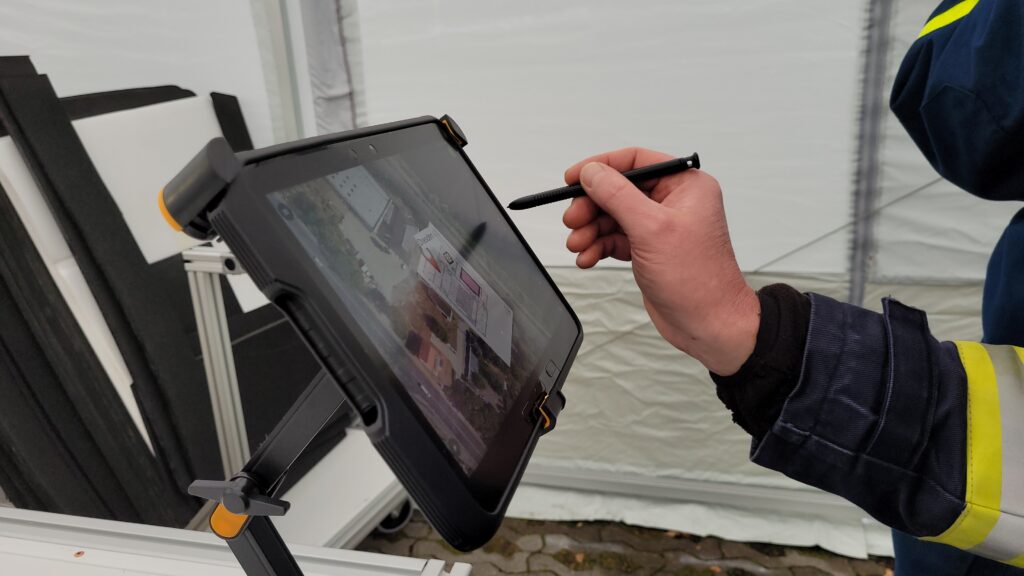
Cultural heritage objects are documented using an app | photos: DAI, E. Götting-Martin
The paintings, coins, sherds, textiles, archive material and other objects of cultural heritage which had been salvaged during the field test then passed along a series of work stations in the tents. In the admissions tent, the team carried out the initial registration. They photographed and described the objects using QField, an app developed as part of the project. In the next two tents, conservation specialists took delivery of the cultural heritage items, cleaned them according to need at several work stations designed for wet and dry cleaning, and carried out preliminary emergency conservation measures. In other tents, team members photographed and documented the final condition of the objects after undergoing emergency treatment, and packaged them in an appropriate manner. Finally the cultural heritage objects arrived in an exit tent where they were stored, ready to be handed over, with the collected data, to the stakeholders locally.
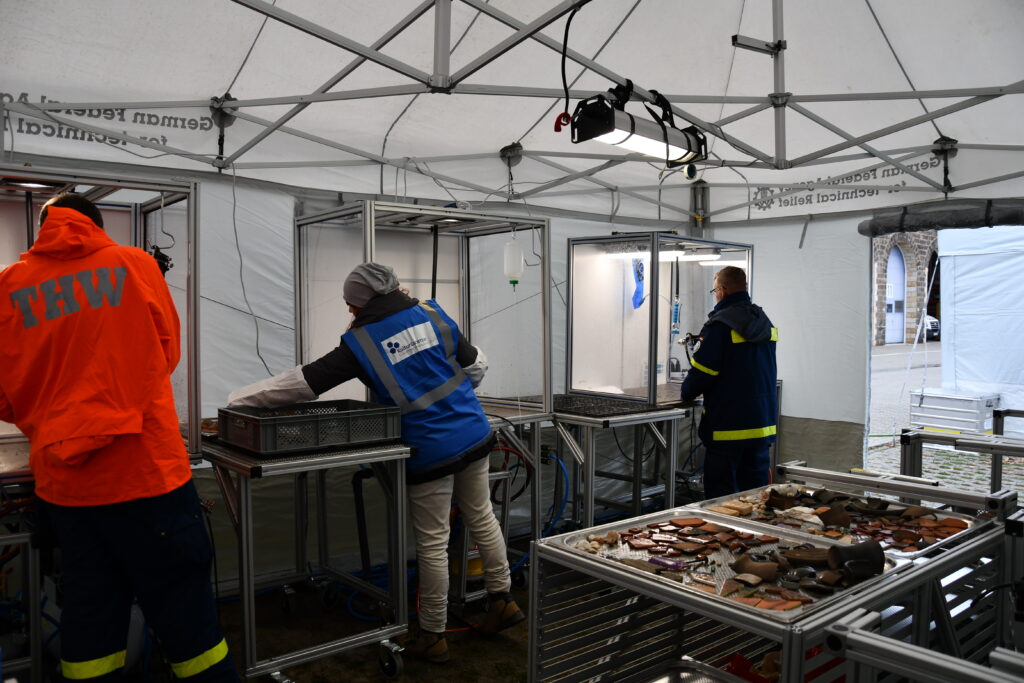
The finds are treated at three wet-cleaning work stations in the mobile rescue lab | photo: DAI, E. Götting-Martin.
In the course of the evaluation of the workflows, specialists from the DAI, LEIZA and THW with the support of Dresden’s emergency response organisation and the THW-OV Dresden gathered valuable information and feedback, which will allow them to further develop and optimise workflows, devices and software used by the Cultural Heritage Response Unit. The field test showed how effectively specialists in cultural heritage protection worked with operational personnel from the THW. Processes integrated well and the specialists contributed expertise and perspectives from their respective areas.
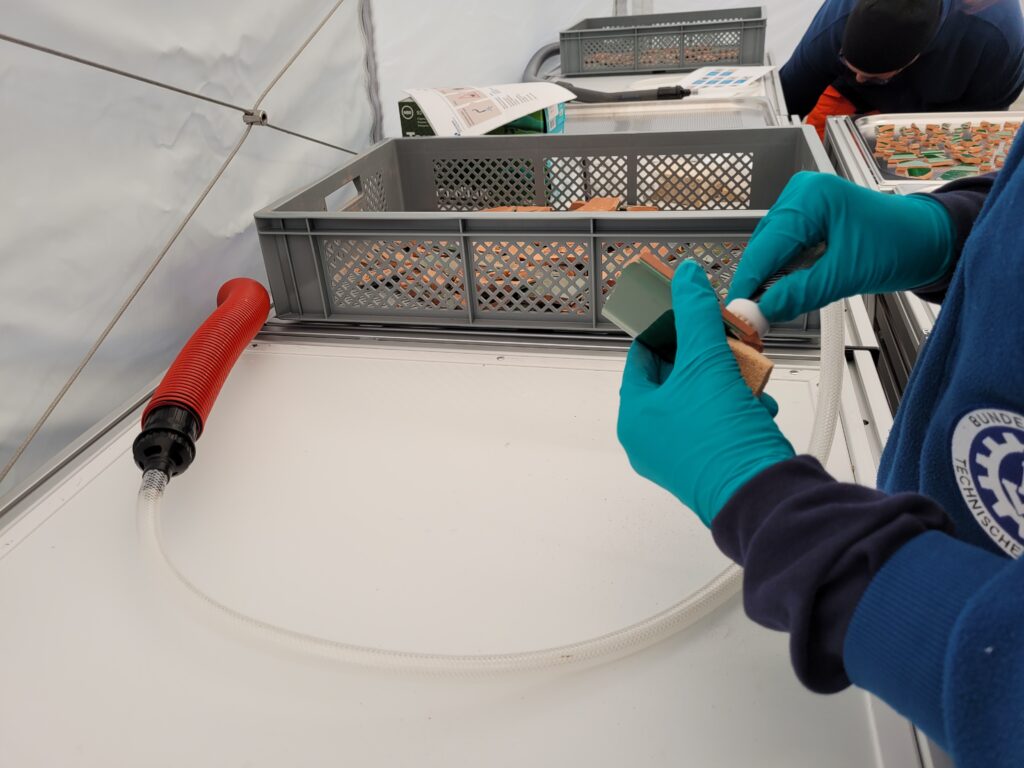
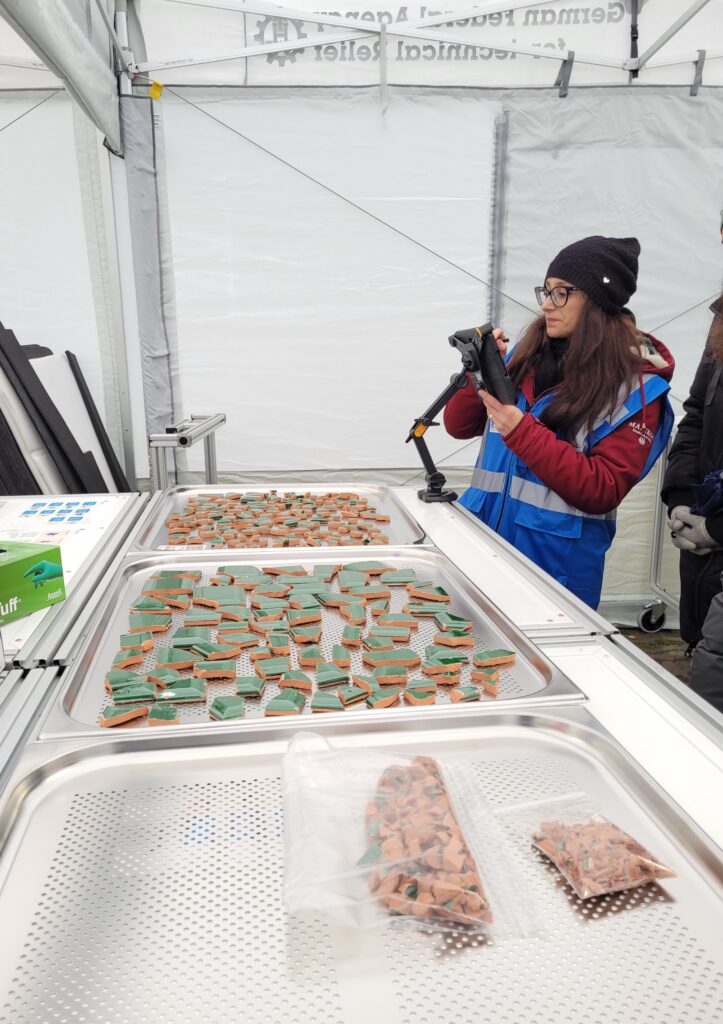
Objects are cleaned at two dry cleaning stations. The new processing status of the objects is recorded via app| Photo: DAI, E. Götting-Martin.
In the past, cultural heritage was constantly at risk from earthquakes, fires and other disasters. In disaster zones around the world it should be possible, once the life saving phase has ended, to salvage, document and conserve cultural property rapidly and effectively. It was for this reason that, in 2019, the KulturGutRetter project was launched by its three partners (DAI, LEIZA and THW) with support from the Federal Foreign Office. The project pools the expertise that exists in Germany in the field of cultural heritage preservation and disaster assistance – in a team of specialists and technicians working on a voluntary basis. In future, in the event of a disaster, the unit will be able to offer rapid international assistance in safeguarding and preserving objects and buildings. Following an international appeal, it will be possible to secure the assistance of the Cultural Heritage Response Unit (CHRU) via the EU Civil Protection Mechanism (UCPM). The mission of the CHRU project partners is to contribute towards the protection and preservation of global cultural assets in the wake of disasters.
